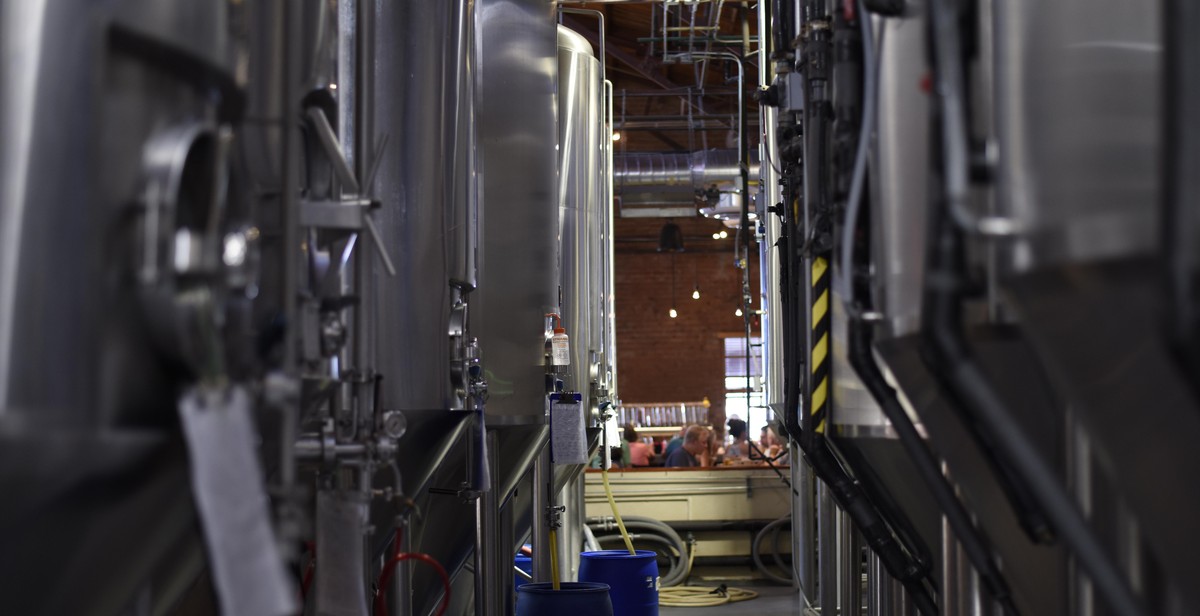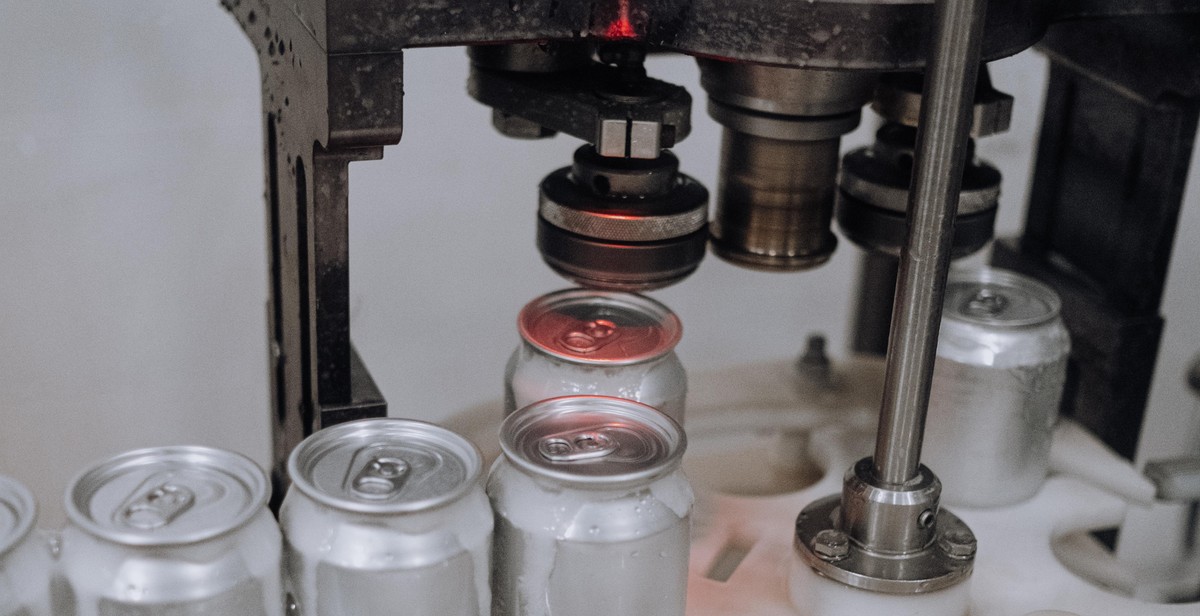How to Start a Microbrewery: Steps to Launching Your Beer Business
Microbreweries have become increasingly popular over the years, and for good reason. These small-scale breweries produce high-quality, unique beers that cater to the tastes of local communities. If you’re a beer enthusiast and are considering starting your own microbrewery, there are several things you need to know.
What is a Microbrewery?
A microbrewery is a small-scale brewery that produces limited quantities of beer. They typically produce less than 15,000 barrels of beer per year and are often independently owned and operated. Microbreweries focus on creating high-quality, unique beers that cater to the tastes of local communities. They are known for their creativity, experimentation, and use of high-quality ingredients.
Starting a microbrewery requires a lot of hard work, dedication, and planning. It’s important to carefully consider all aspects of your business, from the type of beer you want to produce to the location of your brewery. In this article, we will guide you through the steps to launching your own microbrewery.
Table of Contents
- Market Research and Business Planning
- Funding Your Microbrewery
- Choosing a Location for Your Brewery
- Obtaining Licenses and Permits
- Equipment and Supplies
- Hiring Staff
- Marketing and Promotion

Step 1: Conduct Market Research
Before starting a microbrewery, it is essential to conduct market research to identify your target audience, analyze your competitors, and determine your unique selling proposition. This research will help you make informed decisions about your business and increase your chances of success.
Identify Your Target Audience
Your target audience is the group of people who are most likely to buy your beer. To identify your target audience, consider factors such as age, gender, income, and location. You can also conduct surveys or focus groups to gather more information about your potential customers.
Analyze Your Competitors
Competitor analysis is crucial to understand the strengths and weaknesses of your competitors. This can help you identify gaps in the market and differentiate your business from others. Study your competitors’ products, pricing, marketing strategies, and customer reviews to gain insights into their business.
Determine Your Unique Selling Proposition
Your unique selling proposition (USP) is what sets your microbrewery apart from the competition. It could be anything from a unique flavor or brewing technique to sustainable packaging or a strong brand identity. Determine your USP by conducting market research and analyzing your competitors to find a gap in the market that you can fill.
By conducting thorough market research, you can identify your target audience, analyze your competitors, and determine your unique selling proposition. This will help you make informed decisions and increase your chances of success in the highly competitive microbrewery industry.

Step 2: Develop a Business Plan
Developing a business plan is crucial for the success of any microbrewery. A business plan acts as a roadmap for your brewery and helps you identify potential challenges and opportunities. Below are the key elements that should be included in your business plan:
Executive Summary
The executive summary is a brief overview of your business plan and should highlight your business goals, target market, and financial projections. It should be concise, yet informative, and grab the reader’s attention.
Company Description
The company description section should provide an in-depth overview of your microbrewery. This should include your mission statement, legal structure, location, and ownership structure.
Market Analysis
The market analysis section should provide a detailed analysis of your target market, competition, and industry trends. This section should also include your marketing and sales strategies.
Organizational Structure
The organizational structure section should outline the management and staffing structure of your microbrewery. This should include the roles and responsibilities of each employee, as well as their qualifications and experience.
Product Line and Sales Strategy
The product line and sales strategy section should provide an overview of your beer offerings and pricing strategy. This section should also outline your distribution channels, including taproom sales, wholesale distribution, and online sales.
Financial Projections
The financial projections section should provide a detailed analysis of your startup costs, revenue projections, and cash flow projections. This section should also include your break-even analysis and funding requirements.
Overall, a well-written business plan is critical for securing funding, attracting investors, and ensuring the success of your microbrewery. Take your time and ensure that each section is well-written and thoroughly researched.

Step 3: Secure Funding
Starting a microbrewery can be an expensive venture. To launch your beer business, you need to secure funding. Here are some steps to take:
Explore Funding Options
There are various funding options available for microbrewery startups. Some of the common options include:
- Bank loans
- Small Business Administration (SBA) loans
- Crowdfunding
- Investors
- Grants
Each funding option has its pros and cons. Research each option to determine which one suits your business needs.
Prepare Your Loan Application
If you decide to go for a loan, you need to prepare a loan application. The loan application should include:
- A business plan
- A personal financial statement
- A projected financial statement
- Collateral
Ensure that the loan application is well-prepared and professional. This increases your chances of securing a loan.
| Tip: | Consider seeking the services of a financial advisor to help you choose the best funding option and prepare your loan application. |
|---|
Securing funding is an essential step in starting a microbrewery. Explore funding options and prepare a well-detailed loan application to increase your chances of securing funding.

Step 4: Obtain Licenses and Permits
Before you can start brewing and selling your beer, you need to obtain the necessary licenses and permits. This process can be complex and time-consuming, but it is essential to ensure that your microbrewery is operating legally and within the regulations of your state and local government.
Federal Licenses and Permits
The first step in obtaining licenses and permits is to apply for a federal brewer’s notice from the Alcohol and Tobacco Tax and Trade Bureau (TTB). This license is required for all breweries, regardless of their size, and allows you to produce, bottle, and sell beer across state lines. You will also need to register with the FDA and the EPA to ensure that your brewery meets all food safety and environmental regulations.
State Licenses and Permits
Each state has its own licensing requirements for breweries, so it’s important to research the specific regulations in your area. In general, you will need a state brewery license, which allows you to sell beer within your state. You may also need additional licenses for taprooms, distribution, and sales at events.
Local Licenses and Permits
In addition to federal and state licenses, you will also need to obtain local licenses and permits. These may include zoning permits, building permits, and health department inspections. You may also need to apply for a business license and pay taxes to your city or county.
| Licenses and Permits | Description |
|---|---|
| Federal Brewer’s Notice | Allows you to produce, bottle, and sell beer across state lines |
| State Brewery License | Allows you to sell beer within your state |
| Zoning Permit | Ensures that your brewery is located in a permitted area |
| Building Permit | Allows you to construct or renovate your brewery |
| Health Department Inspection | Ensures that your brewery meets food safety regulations |
Obtaining licenses and permits can be a lengthy and complicated process, but it is essential for the success of your microbrewery. Be sure to research the specific requirements in your area and consult with a lawyer or licensing expert if necessary.

Step 5: Choose a Location and Set Up Your Brewery
Choosing the right location for your microbrewery is crucial to the success of your business. You need to consider factors such as accessibility, zoning laws, and proximity to your target market. Here are some tips to help you select the perfect location for your microbrewery:
Selecting a Location
- Look for a space that is large enough to accommodate your brewing equipment, storage, and taproom.
- Consider the cost of rent, utilities, and other expenses associated with the location.
- Check local zoning laws to ensure that your business is allowed in that area.
- Consider the proximity to public transportation and parking options for your customers.
- Research the neighborhood to determine if it is a good fit for your target market.
Designing Your Brewery
Once you have selected a location, it’s time to design your brewery. This includes creating a floor plan and layout that maximizes efficiency and productivity. Consider the following:
- Arrange your brewing equipment in a way that allows for easy movement and cleaning.
- Design a taproom that is welcoming and comfortable for your customers.
- Consider the flow of customers and staff to minimize congestion and improve efficiency.
- Ensure that your design meets local building codes and safety regulations.
Purchasing Equipment and Supplies
Once you have a location and design, it’s time to purchase your brewing equipment and supplies. Here are some tips:
- Research suppliers to find the best deals on equipment and supplies.
- Consider buying used equipment to save money.
- Ensure that your equipment meets local safety and health regulations.
- Stock up on brewing supplies such as yeast, hops, and malt.
| Location | Design | Equipment and Supplies |
|---|---|---|
| Select a location that is accessible, meets zoning laws, and is close to your target market. | Design a brewery layout that maximizes efficiency and productivity. | Purchase brewing equipment and supplies that meet local safety and health regulations. |

Step 6: Hire Staff and Train Them
Starting a microbrewery requires a team effort to ensure smooth operations. The success of your brewery business depends on the quality of your staff, and it’s important to identify key positions to recruit and hire the right people for the job.
Identify Key Positions
Before you start hiring staff, you need to identify key positions that are crucial to the success of your microbrewery. These positions include:
- Brewmaster
- Assistant Brewer
- Sales and Marketing Manager
- Taproom Manager
- Delivery Driver
Each of these positions plays a crucial role in ensuring that your microbrewery runs smoothly and efficiently.
Recruit and Hire Staff
When recruiting and hiring staff, it’s important to look for individuals with experience in the brewing industry. You can advertise your job openings on job boards, social media, and industry-specific websites to attract qualified candidates.
During the hiring process, be sure to conduct thorough interviews and check references to ensure that you’re hiring the right people for the job.
Provide On-the-Job Training
Once you’ve hired your staff, it’s important to provide on-the-job training to ensure that they understand the ins and outs of your microbrewery. This training should cover everything from brewing techniques to customer service skills.
You can also provide ongoing training to keep your staff up-to-date with industry trends and new techniques.
| Benefits of Training |
|---|
| Improved efficiency and productivity |
| Increased job satisfaction and motivation |
| Better customer service and satisfaction |
Hiring the right staff and providing them with the necessary training is crucial to the success of your microbrewery. With a well-trained and motivated team, you’ll be able to produce high-quality beer and provide excellent customer service, which will help your business grow and thrive.

Step 7: Launch Your Brewery and Promote Your Beer
After completing the previous steps, it’s time to launch your microbrewery and start promoting your beer. Here are some tips to help you get started:
Develop a Marketing Plan
A marketing plan is crucial for the success of your microbrewery. Start by identifying your target market and creating a brand identity that appeals to them. Then, determine the best marketing channels to reach your audience, such as social media, email marketing, and advertising. Consider hiring a marketing professional to help you develop and execute your plan.
Host a Grand Opening Event
A grand opening event is a great way to generate buzz and attract customers to your microbrewery. Offer discounts, giveaways, and free samples to entice people to attend. Partner with local businesses and influencers to help promote the event and increase attendance.
Participate in Beer Festivals and Competitions
Beer festivals and competitions are excellent opportunities to showcase your beer and gain exposure. Research local and regional events and register to participate. Be sure to bring your best beer and promotional materials to make a lasting impression on attendees.
- Consider sponsoring an event or competition to increase brand awareness and show your support for the craft beer community.
- Collect customer feedback and use it to improve your beer and marketing efforts.
By following these tips, you can successfully launch your microbrewery and promote your beer to the right audience.
